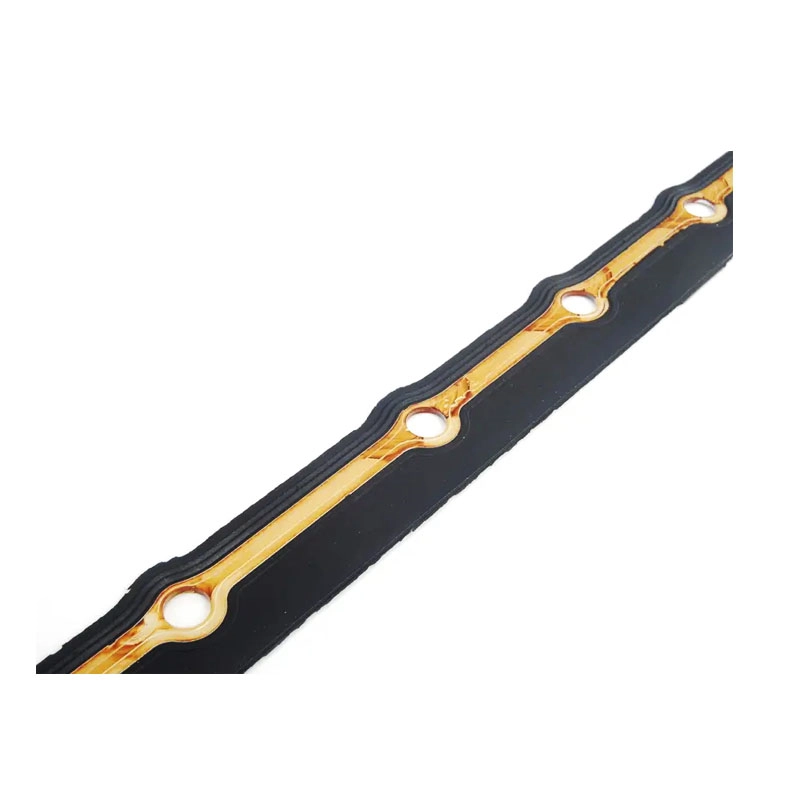Discover High-Quality Oil Seal 19.8 x 30 x 7 for Reliable Performance in Various Applications
Understanding Oil Seals A Closer Look at the 19.8 x 30 x 7 Specification
Oil seals play a crucial role in numerous machinery and engineering applications, acting as the essential barrier that retains fluid within a system while preventing contaminants from entering. Among the many varieties available, the 19.8 x 30 x 7 oil seal stands out due to its specific dimensions and capabilities, making it a popular choice in various industries.
What is an Oil Seal?
An oil seal, also known as a shaft seal or lip seal, is designed to prevent the leakage of lubricants and fluids in mechanical systems. It provides a reliable sealing solution by using a flexible lip that hugs the rotating shaft, effectively blocking the unwanted escape of oil or other lubricants. The material used for manufacturing these seals is typically elastomeric, which allows for flexibility and resilience under diverse operational conditions.
Importance of Dimensions
The dimensions of an oil seal are critical for its performance. The 19.8 x 30 x 7 specification describes the seal’s outer diameter (30 mm), inner diameter (19.8 mm), and thickness (7 mm). These measurements must match precisely with the components of the machinery in which the seal is used. A proper fit ensures that the seal performs effectively, minimizing the risk of leakage and extending the lifespan of hydraulic and mechanical systems.
Applications of the 19.8 x 30 x 7 Oil Seal
This specific oil seal size finds applications in various sectors. One of the most common uses is in automotive engineering, where it is utilized in components such as engines, transmissions, and differentials. Given the dynamic environments of these applications, oil seals must accommodate variations in temperature, pressure, and the physical properties of oils and lubricants.
oil seal 19.8 x30x7

Apart from automotive applications, the 19.8 x 30 x 7 oil seal is also used in industrial machinery, such as pumps, gearboxes, and hydraulic systems. In such scenarios, the role of the oil seal becomes even more critical due to the high speeds and loads that these systems often experience.
Material Composition
The effectiveness of an oil seal largely depends on the material composition. Common materials used include nitrile rubber (NBR), which is known for its oil resistance, or fluorocarbon (FKM), which offers enhanced temperature stability and resistance to aggressive chemicals. Choosing the right material not only contributes to the seal's functionality but also influences its durability and performance in specific environments.
Maintenance and Replacement
Even though oil seals are designed to last, they are not immune to wear and tear over time. Factors such as exposure to extreme temperatures, aggressive chemicals, and improper installation can lead to deterioration. Regular maintenance checks are necessary to identify signs of leakage or wear, allowing for timely replacement. Ignoring these signs can lead to more extensive damage to machinery, resulting in expensive repairs and downtime.
Conclusion
In conclusion, the 19.8 x 30 x 7 oil seal is an indispensable component that ensures the efficient functioning of various machinery across different sectors. Understanding its specifications, applications, and material characteristics can help users choose the right seal for their needs. By investing in quality oil seals and ensuring proper maintenance, businesses can enhance the reliability and longevity of their mechanical systems, ultimately leading to improved operational efficiency. As technology continues to evolve, the importance of effective sealing solutions like the oil seal will remain paramount in the quest for optimal performance and reliability in engineering applications.
-
Simplifying Oil Changes: A Comprehensive Guide to Oil Drain Plugs and Their Variants
News Aug.04,2025
-
Mastering Oil Drain Maintenance: Solutions for Stripped, Worn, and Upgraded Oil Plugs
News Aug.04,2025
-
Fixing Oil Pan Plug Issues: Leaks, Stripped Nuts, and the Right Replacement Solutions
News Aug.04,2025
-
Everything You Need to Know About Oil Drain Plugs: Sizes, Fixes, and Upgrades
News Aug.04,2025
-
Choosing the Right Oil Drain Plug: A Guide to Sizes, Materials, and Drain Innovations
News Aug.04,2025
-
A Complete Guide to Automotive Drain Plugs: Types, Problems, and Innovative Solutions
News Aug.04,2025
-
The Ultimate Guide to Car Repair Kits: Tools and Essentials Every Driver Should Own
News Aug.01,2025
Products categories















